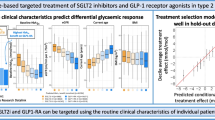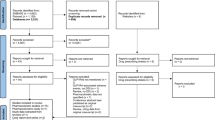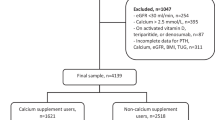Abstract
Objective
The aim of this study was to develop a population pharmacokinetic model of digoxin in patients over 90 years old and to propose an equation for adjusting digoxin dose in this population.
Methods
We included 326 nonagenarian patients admitted to Severo Ochoa University Hospital (Spain) who received digoxin and were under therapeutic drug monitoring. All data were retrospectively collected, and population modeling was performed with non-linear mixed-effect modeling software (NONMEM®). One- and two-compartment models were tested to calculate digoxin clearance (Cl), volume of distribution (Vd), absorption rate constant (Ka), and bioavailability (bioavailable fraction, F). The covariates were evaluated by stepwise covariate model building, and the final model was internally validated by bootstrap analysis with 1000 resamples. External validation was performed with another population of 95 patients with the same characteristics as the modeling group.
Results
The population was 26% males, with a mean age of 93.2 years (90–103 years), mean creatinine 1.11 mg/dL (0.42–3.81 mg/dL), and mean total body weight 61.2 kg (40–100 kg). The pharmacokinetics of digoxin were best described by a one-compartment model (ADVAN2 TRANS2), with first-order conditional estimation with interaction. The covariates with influence on our model were creatinine clearance based on the Cockcroft–Gault equation (CG), serum potassium (K), co-administration of loop diuretics, and sex: Cl/F = 4.55 · (CG/36.4)0.468 · 0.83LD · 1.21SEX; Vd/F = 355 · (K/4.3)−0.849; Ka = 1.22 h−1 [where LD indicates loop diuretics (1 for administered, 0 for otherwise) and SEX indicates patient sex (1 for male, 0 for female)]. Based on our results, we proposed an equation to adjust the digoxin dosing regimen in nonagenarian patients: dose (mg) = 0.144 · (CG/36.4)0.468 · 0.83LD · 1.21SEX.
Conclusions
The greatest influence on digoxin clearance came from renal function calculated by the Cockcroft–Gault equation. Vd was decreased by K. The model developed showed a precise predictive performance to be applied for therapeutic drug monitoring.





Similar content being viewed by others
References
Brunton LL, Knollmann BC. Goodman & Gilman's: the pharmacological basis of therapeutics, 14th ed. McGraw Hill; 2022.
Turnheim K. When drug therapy gets old: pharmacokinetics and pharmacodynamics in the elderly. Exp Gerontol. 2003;38:843–53.
Vamos M, Erath JW, Hohnloser SH. Digoxin-associated mortality: a systematic review and meta-analysis of the literature. Eur Heart J. 2015;36(28):1831–8.
Schlender JF, Meyer M, Thelsen K, et al. Development of a whole-body physiologically based pharmacokinetic approach to assess the pharmacokinetics of drugs in elderly individuals. Clin Pharmacokinet. 2016;55:1573–89.
McLean AJ, Le Couteur DG. Aging biology and geriatric clinical pharmacology. Pharmacol Rev. 2004;56:163–84.
Mangoni AA, Jackson SHD. Age-related changes in pharmacokinetics and pharmacodynamics: Basic principles and practical applications. Br J Clin Pharmacol. 2003;57:6–14.
Butler JM, Begg EJ. Free drug metabolic clearance in elderly people. Clin Pharmacokinet. 2008;47:297–321.
Benet LZ, Hoener BA. Changes in plasma protein binding have little clinical relevance. Clin Pharmacol Ther. 2002;71:115–21.
Currie GM, Wheat JM, Kiat H. Pharmacokinetic considerations for digoxin in older people. Open Cardiovasc Med J. 2011;5:130–5.
Denic A, Glassock RJ, Rule AD. Structural and functional changes with the aging kidney. Adv Chronic Kidney Dis. 2016;23(1):19–28.
Glassock RJ, Rule AD. The implications of anatomical and functional changes of the aging kidney: with an emphasis on the glomeruli. Kidney Int. 2012;82(3):270–7.
Wiggins JE. Aging in the glomerulus. J Gerontol A Biol Sci Med Sci. 2012;67(12):1358–64.
Ewing AB. Altered drug response in the elderly. In: Armour D, Cairns C, editors. Medicines in the elderly. London: Pharmaceutical Press; 2002.
Delafuente JC. Pharmacokinetic and pharmacodynamic alterations in the geriatric patient. Consult Pharm. 2008;23:324–34.
El Desoky ES. Pharmacokinetic-pharmacodynamic crisis in the elderly. Am J Ther. 2007;14:488–98.
Kostrzewski A. Cardiovascular medicines in the elderly. In: Armour D, Cairns C, editors. Medicines in the elderly. London: Pharmaceutical Press; 2002.
Yukawa E, Suematu F, Yukawa M, et al. Population pharmacokinetics of digoxin in Japanese patients. A 2-compartment pharmacokinetic model. Clin Pharmacokinet. 2001;40(10):773–81.
Zhou XD, Gao Y, Guan Z, et al. Population pharmacokinetic model of digoxin in older Chinese patients and its application in clinical practice. Acta Pharmacol Sin. 2010;31(6):753–8.
Chen R, Zou SL, Wang ML, et al. Population pharmacokinetics of digoxin in elderly patients. Eur J Drug Metab Pharmacokinet. 2013;38(2):115–21.
Komatsu T, Morita M, Miyaji F, et al. Population pharmacokinetics and optimization of the dosing regimen of digoxin in adult patients. J Pharm Health Care and Sci. 2015;1:25.
Choi SA, Yun HY, Lee ES, et al. A population pharmacokinetic analysis of the influence of nutritional status of digoxin in hospitalized Korean patients. Clin Ther. 2014;36(3):389–400.
Yukawa M, Yukawa E, Suematsu F, et al. Determination of digoxin clearance in Japanese elderly patients for optimization of drug therapy. A population pharmacokinetic analysis using nonlinear mixed-effects modelling. Drug Aging. 2011;28:831–41.
Bauer LA, Horn JR, Pettit H. Mixed-effect modeling for detection and evaluation of drug interactions: digoxin-quinidine and digoxin-verapamil combinations. Ther Drug Monit. 1996;18(1):46–52.
Du P, et al. Impact of SLCO4C1 genotypes, creatinine, and spironolactone on digoxin population pharmacokinetic variables in patients with cardiac insufficiency. Clin Ther. 2020;42(9):1799-810.e3.
Nagaraja NV, Park YJ, Jeon S, Sands CD, Derendorf H. Population pharmacokinetics of digoxin in Korean patients. Int J Clin Pharmacol Ther. 2000;38(6):291–7.
Carlton LD, Patterson JH, Mattson CN, Schmith VD. The effects of epoprostenol on drug disposition I: a pilot study of the pharmacokinetics of digoxin with and without epoprostenol in patients with congestive heart failure. J Clin Pharmacol. 1996;36(3):257–64.
Williams PJ, Lane J, Murray W, Mergener MA, Kamigaki M. Pharmacokinetics of the digoxin-quinidine interaction via mixed-effect modelling. Clin Pharmacokinet. 1992;22(1):66–74.
Sheiner LB, Rosenberg B, Marathe VV. Estimation of population characteristics of pharmacokinetic parameters from routine clinical data. J Pharmacokinet Biopharm. 1977;5(5):445–79.
Yukawa E, Mine H, Higuchi S, Aoyama T. Digoxin population pharmacokinetics from routine clinical data: role of patient characteristics for estimating dosing regimens. J Pharm Pharmacol. 1992;44(9):761–5.
Hornestam B, Jerling M, Karlsson MO, Held P, DAAf Trial Group. Intravenously administered digoxin in patients with acute atrial fibrillation: a population pharmacokinetic/ pharmacodynamic analysis based on the Digitalis in Acute Atrial Fibrillation trial. Eur J Clin Pharmacol. 2003;58(11):747–55.
Suematsu F, Yukawa E, Yukawa M, et al. Pharmacoepidemiologic detection of calcium channel blocker-induced change on digoxin clearance using multiple trough screen analysis. Biopharm Drug Dispos. 2002;23(5):173–81.
Yukawa E, Honda T, Ohdo S, et al. Population-based investigation of relative clearance of digoxin in Japanese patients by multiple trough screen analysis: an update. J Clin Pharmacol. 1997;37(2):92–100.
Konishi H, Shimizu S, Chiba M, et al. Predictive performance of serum digoxin concentration in patients with congestive heart failure by a hyperbolic model based on creatinine clearance. J Clin Pharm Ther. 2002;27(4):257–65.
Beal SL, Sheiner LB, Boeckmann AJ, Bauer RJ, editors. NONMEM 7.4 users guides. (ICON plc, Gaithersburg, MD, 1989–2018).
Keizer RJ, Van Benten M, Beijnen JH, et al. Piraña and PCluster: a modeling environment and cluster infrastructure for NONMEM. Comput Methods Programs Biomed. 2011;1:72–9.
Lindbom L, Pihlgren P, Jonsson EN. PsN-Toolkit—a collection of computer intensive statistical methods for non-linear mixed effect modeling using NONMEM. Comput Methods Programs Biomed. 2005;79:241–57.
Jonsson EN, Karlsson MO. Xpose—an S-PLUS based population pharmacokinetic/ pharmacodynamic model building aid for NONMEM. Comput Methods Programs Biomed. 1999;58(1):51–64.
Beckman Coulter. SYNCHRON Chemistry Information System sheet. 2015. https://www.beckmancoulter.com/wsrportal/techdocs?docname=/cis/A18505/%25%25/EN_Ig-A.pdf.
Automated COBAS method of Electrochemiluminescence Immunoassay (ECLIA) patented by Roche Diagnostics® (version 2.0), 2017.
Keizer RJ, Karlsson MO, Hooker A. Modeling and simulation workbench for NONMEM: tutorial on Pirana, PsN, and Xpose. CPT Pharmacomet. Syst. Pharmacol. 2, e50.
Sheiner LB, Beal SL. Some suggestions for measuring predictive performance. J Pharmacokinet Biopharm. 1981;9(4):503–12.
Abdel Jalil M, Abdullah N, Alsous M, et al. A systematic review of population pharmacokinetic analyses of digoxin in the paediatric population. Br J Clin Pharmacol. 2020;86(7):1267–80.
Abdel Jalil M, Abdullah N, Alsous M, et al. Population pharmacokinetic studies of digoxin in adult patients: a systematic review. Eur J Drug Metab Pharmacokinet. 2021;46(3):325–42.
Salcedo-Mingoarranz AL, García-Díaz B, Barcia-Hernández E. Population pharmacokinetics of digoxin in elderly patients: a systematic review. Farm Hosp. 2022;46(6):359–66.
Rivoirard R, Chargari C, Trone JC, et al. General management of nonagenarian patients: a review of the literature. Swiss Med Wkly. 2014;23(144): w14059.
Rea IM. BELFAST nonagenarians: nature or nurture? Immunological, cardiovascular and genetic factors. Immun Ageing. 2010;27(7):6.
Jylhävä J, Nevalainen T, Marttila S, et al. Characterization of the role of distinct plasma cell-free DNA species in age-associated inflammation and frailty. Aging Cell. 2013;12(3):388–97.
John SM, Koelmeyer TD. The forensic pathology of nonagenarians and centenarians: do they die of old age? (The Auckland experience). Am J Forensic Med Pathol. 2001;22(2):150–4.
Odden MC, Shlipak MG, Tager IB. Serum creatinine and functional limitation in elderly persons. J Gerontol A Biol Sci Med Sci. 2009;64(3):370–6.
Verhave JC, Fesler P, Ribstein J, et al. Estimation of renal function in subjects with normal serum creatinine levels: influence of age and body mass index. Am J Kidney Dis. 2005;46:233–41.
Winter MA, Guhr KN, Berg GM. Impact of various body weights and serum creatinine concentrations on the bias and accuracy of the Cockcroft-Gault equation. Pharmacotherapy. 2012;32:604–12.
Matsuo M, Yamagishi F. Age-dependent error in creatinine clearance estimated by Cockcroft–Gault equation for the elderly patients in a Japanese hospital: a cross-sectional study. J Anesth. 2019;33(1):155–8.
Stevens LA, Coresh J, Feldman HI, et al. Evaluation of the modification of diet in renal disease study equation in a large diverse population. J Am Soc Nephrol. 2007;18:2749–57.
Levey AS, Stevens LA, Schmid CH, et al. CKD-EPI (Chronic Kidney Disease Epidemiology Collaboration). A new equation to estimate glomerular filtration rate. Ann Intern Med. 2009;150:604–12.
Cartet-Farnier E, Goutelle-Audibert L, Maire P, et al. Implications of using the MDRD or CKD-EPI equation instead of the Cockcroft-Gault equation for estimating renal function and drug dosage adjustment in elderly patients. Fundam Clin Pharmacol. 2017;31(1):110–9.
Gill J, Malyuk R, Djurdjev O, et al. Use of GFR equations to adjust drug doses in an elderly multi-ethnic group: a cautionary tale. Nephrol Dial Transplant. 2007;22:2894–9.
Wade JR, Kelman AW, Howie CA, Whiting B. Effect of misspecification of the absorption process on subsequent parameter estimation in population analysis. J Pharmacokinet Biopharm. 1993;21:209–22.
Brown DL, Masselink AJ, Lalla CD. Functional range of creatinine clearance for renal drug dosing: a practical solution to the controversy of which weight to use in the Cockcroft-Gault equation. Ann Pharmacother. 2013;47(7–8):1039–44.
Acknowledgements
The authors would like to thank the pharmacists, Biochemistry Department, nurses, and clinicians from Severo Ochoa University Hospital for their contributions to this study.
Author information
Authors and Affiliations
Corresponding author
Ethics declarations
Funding
This article was produced without receiving funding or any grants, consultancies, honoraria, or payment related to speakers' bureaus, stock ownership or options, expert testimony, royalties, donation of medical equipment, or patents planned, pending, or issued.
Conflict of interest
The authors declare no potential conflicts of interest, including relevant financial interests, activities, relationships, and affiliations with any organization or entity with a financial interest in or financial conflict with the subject matter or materials discussed in the article.
Ethics approval
This article was approved by the Ethics Committee of the Severo Ochoa University Hospital (ID number: ASM-DIG-2020-01).
Consent to participate
Not applicable.
Consent for publication
Not applicable.
Availability of data and material
The corresponding author had full access to all the data in the study and takes responsibility for the integrity of the data and the accuracy of the data analysis.
Code availability
Not applicable.
Author contributions
All authors were involved in data collection, formal analysis, and manuscript writing, review, and editing. All authors have read and agreed to the published version of the manuscript.
Previous presentation of the information reported in the manuscript
The authors declare that this paper is original and has not been previously published, nor is it in the process of being reviewed by any other journal.
Rights and permissions
Springer Nature or its licensor (e.g. a society or other partner) holds exclusive rights to this article under a publishing agreement with the author(s) or other rightsholder(s); author self-archiving of the accepted manuscript version of this article is solely governed by the terms of such publishing agreement and applicable law.
About this article
Cite this article
Salcedo-Mingoarranz, A.L., Medellín-Garibay, S.E., Barcia-Hernández, E. et al. Population Pharmacokinetics of Digoxin in Nonagenarian Patients: Optimization of the Dosing Regimen. Clin Pharmacokinet 62, 1725–1738 (2023). https://doi.org/10.1007/s40262-023-01313-8
Accepted:
Published:
Issue Date:
DOI: https://doi.org/10.1007/s40262-023-01313-8




